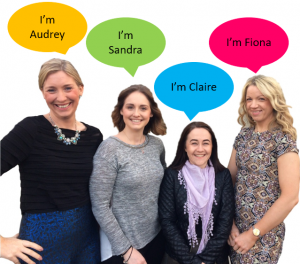Another year and another brilliant Maths Counts Conference. A record crowd of close to 450 watched Professor Takahashi steer an open-ended path through geometry and then witnessed a first for Irish education as our amazing lesson-study teachers taught their students live for all to observe. If that wasn’t enough, there were still 20 interactive workshops to choose from, a poster display of 52 lessons, an address by Maths Development Team National Coordinator, Dr. Anne Brosnan and a presentation on school self evaluation by Senior Inspector, Linda Ramsbottom. It’s fair to say that everybody was tired but energised by conference end on Saturday afternoon.
Thanks to everyone who attended but most especially to our 250 lesson-study teachers and the students and staff of Maynooth Education Campus, Coláiste na hInse, Santa Sabina Dominican College and Temple Carrig School who gave up their weekend so that we all might learn some maths.
a
 Below you’ll find a brief overview of the main events at Maths Counts as well as a library of all 52 lesson proposals showcased at the conference. Enjoy!
Below you’ll find a brief overview of the main events at Maths Counts as well as a library of all 52 lesson proposals showcased at the conference. Enjoy!
a
a
a
Irish Maths Teachers Teaching Live
In a first for Ireland, Maths Counts saw maths teachers teaching live lessons for all to see. If you missed out, we’ll be posting videos of the full live lessons soon for everyone to view. In the meantime meet our live teachers and find out a little more about their lessons.a
Team 1 - From Santa Sabina Dominican College, Sutton, Co. Dublin
Audrey Carty, Sandra Byrne, Claire Holton and Fiona McAvoy’s lesson is The Polygon Predicament and is targeted at Leaving-Cert. Higher-Level students. Combining aspects of Geometry, Probability, Algebra and Functions this problem challenges students to make connections between the different strands of the maths syllabus and aims to develop students’ problem-solving skills, communication and ability to reason. You can find their lesson proposal for The Polygon Predicament in our document library below.
a
Team 2 - From Ballymakenny College, Drogheda & Coláiste na hInse, Bettystown
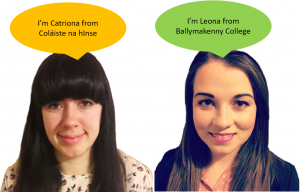
Catriona McArdle from Coláiste na hInse and Leona Matthews from Ballymakenny College worked across their schools to develop a lesson for first-year students. The Great Hall introduces students to algebra using structured problem-solving in such a way that students are encouraged to develop their algebraic reasoning skills, are motivated to engage with algebra and ultimately see algebra as sense making. You can find their lesson proposal for The Great Hall in our document library below.a
a
Team 3 - From Temple Carrig School, Greystones
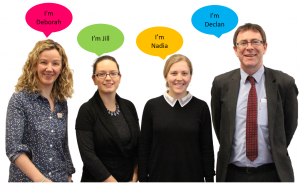
Dr. Declan Cathcart, Deborah Crean, Nadia Douglas and Jill Condell’s lesson Coordinate Geometry meets Synthetic Geometry is designed to help students to develop their deductive reasoning skills by devising as many solutions as they can to a geometric problem. Students are expected to draw on their knowledge of coordinate geometry and geometry theorems, corollaries and constructions to solve the problem. How did students approach the problem? What methods did they use? You can find their lesson proposal for Coordinate Geometry meets Synthetic Geometry in our document library below.
Professor Akihiko Takahashi’s Live Lessons
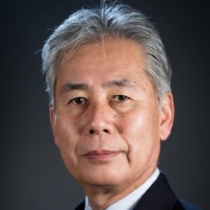 Professor Akihiko Takahashi wowed us for the second year running with his open-ended teaching of Geometry using structured problem solving. Professor Takahashi was ably assisted by first-year students from Maynooth Education Campus (incorporating Maynooth Post-Primary School and Maynooth Community College). Professor Takahashi also addressed the conference on the importance of open-ended tasks to maths lessons. You can download Professor Takahashi’s lesson plan, with student worksheets included here and you can watch Professor Takahashi put the lesson plan into action in the videos below.
Professor Akihiko Takahashi wowed us for the second year running with his open-ended teaching of Geometry using structured problem solving. Professor Takahashi was ably assisted by first-year students from Maynooth Education Campus (incorporating Maynooth Post-Primary School and Maynooth Community College). Professor Takahashi also addressed the conference on the importance of open-ended tasks to maths lessons. You can download Professor Takahashi’s lesson plan, with student worksheets included here and you can watch Professor Takahashi put the lesson plan into action in the videos below.

Prof. Takahashi speaks about the importance of open-ended problems for teaching math...

Prof. Takahashi asks the students of Maynooth Education Campus to draw as many squar...

Prof. Takahashi asks the students to draw as many triangles as they can.

Prof. Takahashi leads students to discover properties of congruent triangles.
Keynote Address
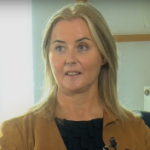 a
a
Dr. Anne Brosnan of the Maths Development Team gave a keynote address on the role that lesson study has played in supporting Irish teachers to incorporate structured problem solving into their maths lessons. Dr. Brosnan outlined the growth of the Maths Development Team’s lesson-study programme and how its continuation can propel Ireland to have world-class maths education. You can download Dr. Brosnan’s presentation here.
Interactive Workshops
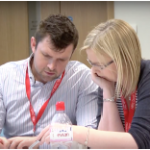 Teachers who participated in Lesson Study 2016-2017 hosted interactive workshops where they gave audience members the chance to try out their problem-solving lesson, discussed their students’ reaction to the lesson and discussed the many ways in which they benefited from being involved in lesson study. All the lesson proposals and problems presented during the workshops are available in our document library below.
Teachers who participated in Lesson Study 2016-2017 hosted interactive workshops where they gave audience members the chance to try out their problem-solving lesson, discussed their students’ reaction to the lesson and discussed the many ways in which they benefited from being involved in lesson study. All the lesson proposals and problems presented during the workshops are available in our document library below.
Poster Exhibition
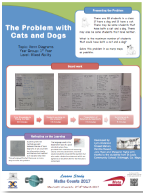 The 250+ maths teachers who participated in Lesson Study 2016-2017 produced a total of 52 lesson proposals. The lesson proposals were summarised by 52 posters which were displayed throughout Maths Counts 2017. All 52 lesson proposals are available for download in our document library below. You can download a PDF containing all the posters here but be warned - it’s a very large file (300+MB) and may take a few minutes to download.
The 250+ maths teachers who participated in Lesson Study 2016-2017 produced a total of 52 lesson proposals. The lesson proposals were summarised by 52 posters which were displayed throughout Maths Counts 2017. All 52 lesson proposals are available for download in our document library below. You can download a PDF containing all the posters here but be warned - it’s a very large file (300+MB) and may take a few minutes to download.
a
a
Sponsors and Exhibitors
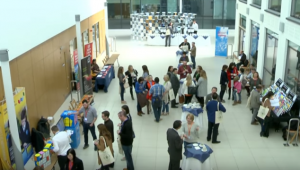 Thank you to our sponsors, Microsoft and Build-Up for sponsoring Maths Counts. Thank you to all our exhibitors who provided teachers with lots of useful information about the latest resources for teaching maths.
Thank you to our sponsors, Microsoft and Build-Up for sponsoring Maths Counts. Thank you to all our exhibitors who provided teachers with lots of useful information about the latest resources for teaching maths.
Problem Solving Lesson Proposals
Check out the 52 lesson proposals developed by maths teachers involved in lesson study.
a
Search for a particular lesson or sort the lessons according to topic, year group or level.
Click RESET to return to the full list of lessons.
a
| Lesson Title | Description | Strand | Year Group | Level |
|---|---|---|---|---|
| Prof. Takahashi’s Lesson Proposal | Through a series of problems, students learn about the conditions required for congruency (includes student worksheets). | Geometry | 1st, 2nd | Common |
| Introducing Differential Calculus | Developing an understanding of key calculus concepts using rates of change. | Functions | 6th | OL |
| The Polygon Predicament | Connecting multiple mathematical topics to solve a geometric problem. | Algebra, Functions, Geometry, Number, Probability | 6th | HL |
| The Perfect Selfie | Using geometry and trigonometry to solve a 3D problem. | Geometry, Trigonometry | 5th | HL |
| Developing Frieda’s Field | Developing the formula for the area of a non-right-angled triangle. | Geometry, Trigonometry | 5th | OL |
| Enter the Matrix | Solving a multi-variable problem using many methods. | Algebra | 5th | OL |
| The General Term of a Quadratic Pattern | Using multiple strategies to develop the formula for a quadratic relationship. | Algebra, Functions | 5th | OL |
| Heading for Trouble | Learning how to deal with a two-variable problem where one relationship is noon-linear. | Algebra | 5th | OL |
| Navigating an Ash Cloud | Drawing on algebra, geometry and trigonometry to solve a problem. | Algebra, Geometry, Trigonometry | 5th | HL |
| The Water Rocket | Analysing quadratic relationships using multiple strategies. | Algebra, Functions, Number | 5th | HL |
| What makes a Parallelogram | Using trigonometry & geometry to calculate the area of a parallelogram. | Geometry, Trigonometry | 5th | OL |
| Tick Tock - Area of an Incircle | Use the properties of an equilateral triangle to find the area of its incircle. | Geometry, Trigonometry | 5th | HL |
| Seeing through the Dab | Applying trigonometry to solve a 3D problem. | Geometry, Trigonometry | TY | Common |
| Decoding De Moivre | Understanding the concepts of rotations and scales which underpin De Moivre’s Theorem. | Algebra, Number, Trigonometry | TY | Common |
| How many ways can you prove It? | Understanding the construction of the bisector of an angle. | Geometry, Trigonometry | 3rd | HL |
| Centre of a Rectangle | Students draw on many topics to find the centroid of a rectangle. | Geometry, Trigonometry | 3rd, 5th | HL, OL |
| Comparing Percentages, Decimals & Fractions | Calculate the percentage and fraction of a number in many ways. | Number | 3rd | OL |
| Coordinate Geometry meets Synthetic Geometry | Using coordinate geometry, theorems, corollaries and constructions to show a quadrilateral is a rectangle. | Geometry, Trigonometry | 3rd | HL |
| Picture this Quadratic | Modelling images using quadratic functions and understanding the importance of roots. | Algebra, Functions | 3rd | HL |
| Transformation Trickery | Applying knowledge of transformations for problem-solving. | Geometry | 3rd | HL |
| 3D Cubes | Identifying right-angled triangles in 3D solids to solve problems. | Geometry, Trigonometry | 3rd | HL |
| Anyone for Pizza - Solving Simultaneous Equations | Modelling problems with simultaneous equations and how elimination can be used to solve them. | Algebra | 2nd | HL |
| Coffee and Tea Simultaneously | Solving a two-variable problem using different techniques. | Algebra, Geometry | 2nd | HL |
| An Average Problem | Understand the properties of different measures of average. | Statistics | 2nd | HL |
| The Cookie Crumbles | Moving from area to volume in a uniform solid. | Number | 2nd | OL |
| Into the Next Dimension | Understanding the relationship between cross-sectional area and volume for a uniform solid. | Number | 2nd | OL |
| Equivalent Fractions | Students learn to compare fractions using graphical methods. | Number | 2nd | OL |
| More Pizza for me | Using scaling to compare different quantities fairly. | Number | 2nd | OL |
| Pragmatic Quadratic | Calculating the area of a shape with unknown dimensions. | Algebra, Functions | 2nd | HL |
| Rich, Happy, Healthy or Famous | Using Census @ School data to compare methods for analysing data. | Statistics | 2nd | Common |
| Roots and Shoots | Calculating the dimensions of a shape given its area in general terms. | Algebra, Functions | 2nd | HL |
| Tri to be Shady | Using many approaches to calculate an unknown area. | Geometry, Number | 2nd | HL |
| The Window Maker | Using two-variable problems to develop simultaneous equations. | Algebra | 2nd | HL |
| Grazing Gazelles | Discovering Pythagoras’s Theorem. | Geometry, Trigonometry | 2nd | OL |
| Tin of Beans | Using the concept of cross-sectional area to change area of a circle into volume of a cylinder. | Number | 2nd | HL |
| Translating Words into Symbols | Using different operations to develop the same number. | Algebra, Number, Probability | 1st | Common |
| An Alternative Approach to Alternate Angles | Problem solving to demonstrate that alternate angles are equal in measure. | Geometry | 1st | Common |
| Are you Snookered? | Use axioms and theorems to calculate a pair of missing angles. | Geometry | 1st | Common |
| Perimeter of an Irregular Shape | Calculating perimeter of a shape with known and unknown lengths. | Algebra, Number | 1st | Common |
| Home and Away | Understanding distance-time graphs. | Algebra, Number | 1st | Common |
| A Tough Climb | Understanding the concept of slope. | Geometry, Trigonometry | 1st | Common |
| Mary’s Age | Applying linear equations to problems. | Algebra | 1st | Common |
| Perfecting Percentages | Understanding the usefulness of percentages in understanding proportion. | Number | 1st | Common |
| Count the Sweets | Students apply algebraic reasoning to problem-solve a linear relationship. | Algebra, Number | 1st | Common |
| The Chocolate Challenge | Using equivalent fractions to decide which unit quantity is greatest. | Number | 1st | Common |
| The Great Hall | Using linear relationships to develop algebraic thinking. | Algebra | 1st | Common |
| The Problem with Cats & Dogs | Learning to use Venn Diagrams as a problem-solving tool. | Number | 1st | Common |
| What’s your Angle? | Applying knowledge of axioms and theorems to calculate missing angles. | Geometry | 1st | Common |
| Working with Fred Pattern-Son | Using a visual pattern to introduce linear relationships. | Algebra | 1st | Common |
| Introducing Algebra & Word Equations | Applying algebraic reasoning to in-context problems. | Algebra | 1st | Common |
| Let’s think about BIDMAS | Applying order of operations to generate different numbers. | Number | 1st | Common |
| Dogs do Patterns | Using a real-life problem to develop an understanding of linear relationships. | Algebra, Number | 1st | Common |



